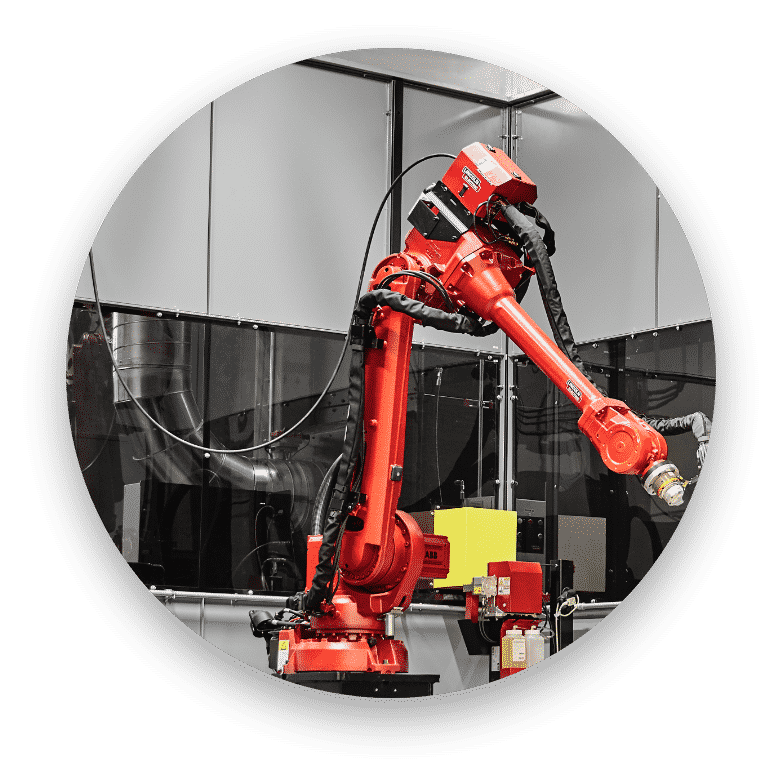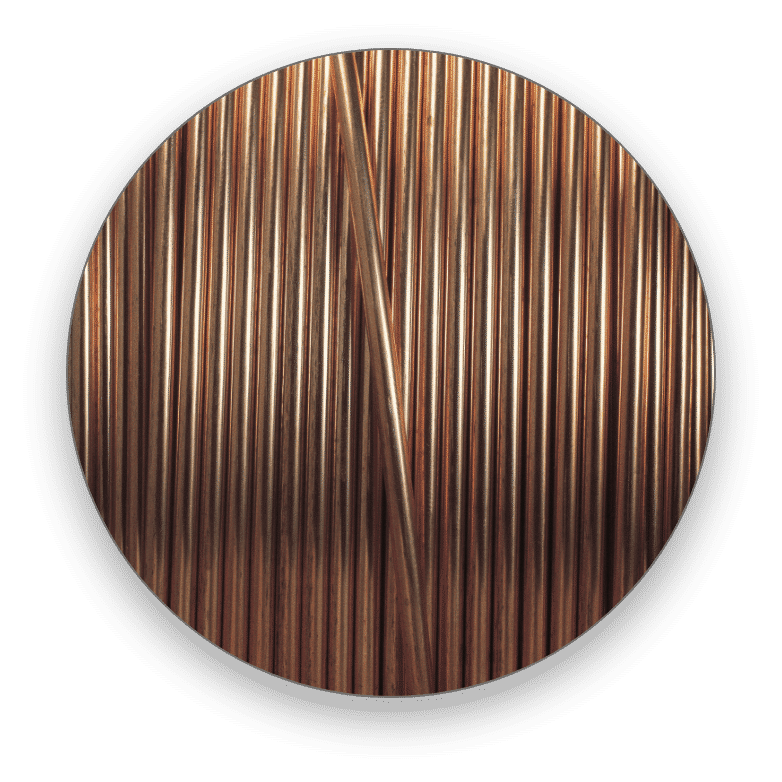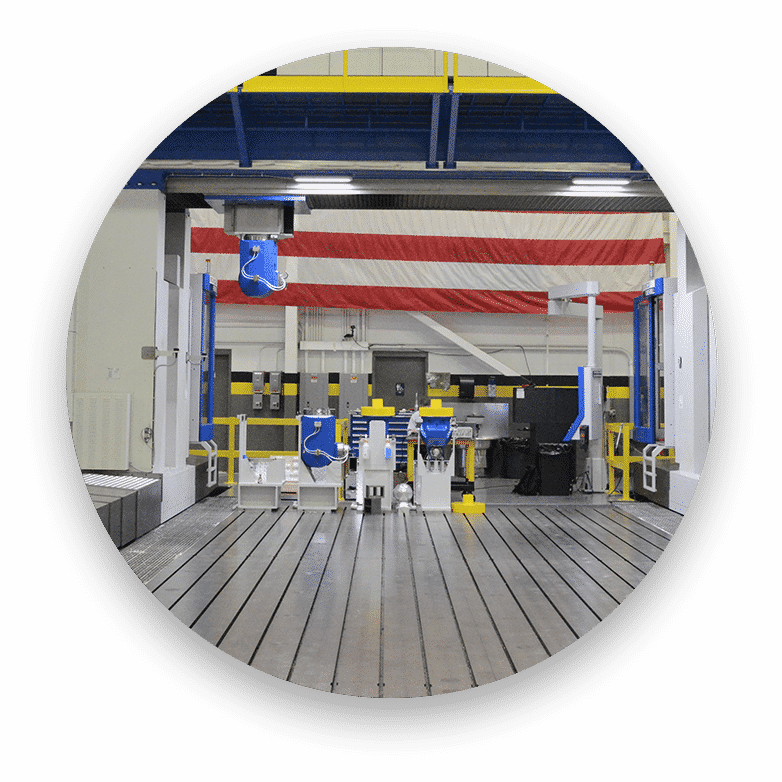Save time, reduce direct and indirect costs, explore more possibilities, and operate more efficiently than traditional manufacturing operations by using our large-scale 3D metal printing technology for your next large tool.
3D printing, also known as additive manufacturing, is a revolutionary technology that holds promise to revolutionize manufacturing as we know it. However, the vast majority of existing technologies are limited in terms of build envelope and production rates, forcing users to forego their use altogether or compromise on size, material waste, and more.
One type of 3D metal printing, wire arc additive manufacturing (WAAM), also known as Gas Metal Arc Additive Manufacturing (GMAAM), has gained attention in recent years due to its ability to produce large metal components with high accuracy, efficiency, and countless other benefits.
Our proprietary, state-of-the-art WAAM technology presents a strong additive manufacturing solution for a diverse range of large-scale aerospace, defense, and space tools and components.
We are uniquely positioned in this space to bring the right experience and technologies for your project, based on your material and application requirements. Using GMAW arc welding or laser hot-wire processes, we can tap into a deep well of welding deposition, equipment, and automation knowledge to meet your needs. Every step is customized to deliver the best material, design, and end product for your specific application. Every conversation is a collaboration between our team and yours. Every outcome is designed to meet your operational needs.
Reduce lead times from months or years to weeks or days, especially compared to traditional processes like bump-forming
Reduce weight, mix multiple materials, and incorporate features and geometries that were previously difficult or impossible
Quickly test actual use in real environments
Print on demand and eliminate supply chain bottlenecks
Fewer operations. Fewer handoffs.
Use less material compared to subtractive processes
We can 3D print a variety of industrial metals, including combinations of materials.
Unlock new possibilities: tools produced using our large-scale 3D metal printing technology are measured in feet or meters, not mere inches.
Tackle part geometries and features that are challenging or impossible for traditional processes like casting, machining, and bump-forming.

With large-format wire-based metal additive manufacturing, the component is manipulated while depositing material. Advanced software is critical to address complex path-planning and coordinated motion between the robot and the positioner.

Full control over each layer’s wire path allows for optimal process parameters and material deposition.
We have developed height-sensing and adaptive feedback software to maintain tight customer-specified tolerances.
Complex tool printing can be achieved using advanced robots collaborating with rotating positioners and motion-control software.
3D printing, also known as additive manufacturing, is a revolutionary technology that holds promise to revolutionize manufacturing as we know it. However, the vast majority of existing technologies are limited in terms of build envelope and production rates, forcing users to forego their use altogether or compromise on size, material waste, and more.




While it is one of the oldest 3D printing technologies, WAAM is relatively new in terms of commercialization and has not yet been certified or qualified for flight hardware applications. Thus, its aerospace, defense, and space applications have so far been limited to tooling. Learn more about its applications in other industries here.
WAAM presents a variety of strong benefits when used for tooling applications in aerospace, defense, and space manufacturing, especially for layup molds, trim fixtures, and other tooling used in composite part fabrication.
New tooling is often a bottleneck in getting new manufacturing operations up and running on time, particularly as engineers often need to accommodate last-minute design changes. Additive manufacturing can eliminate the tooling bottleneck by providing design flexibility, adaptability to changes, shortened lead times, and cost savings.
Speak to an aerospace, defense, and space industry large-scale 3D metal printing expert today! Our team is standing by, ready to help answer questions or get started on a quote for your project.